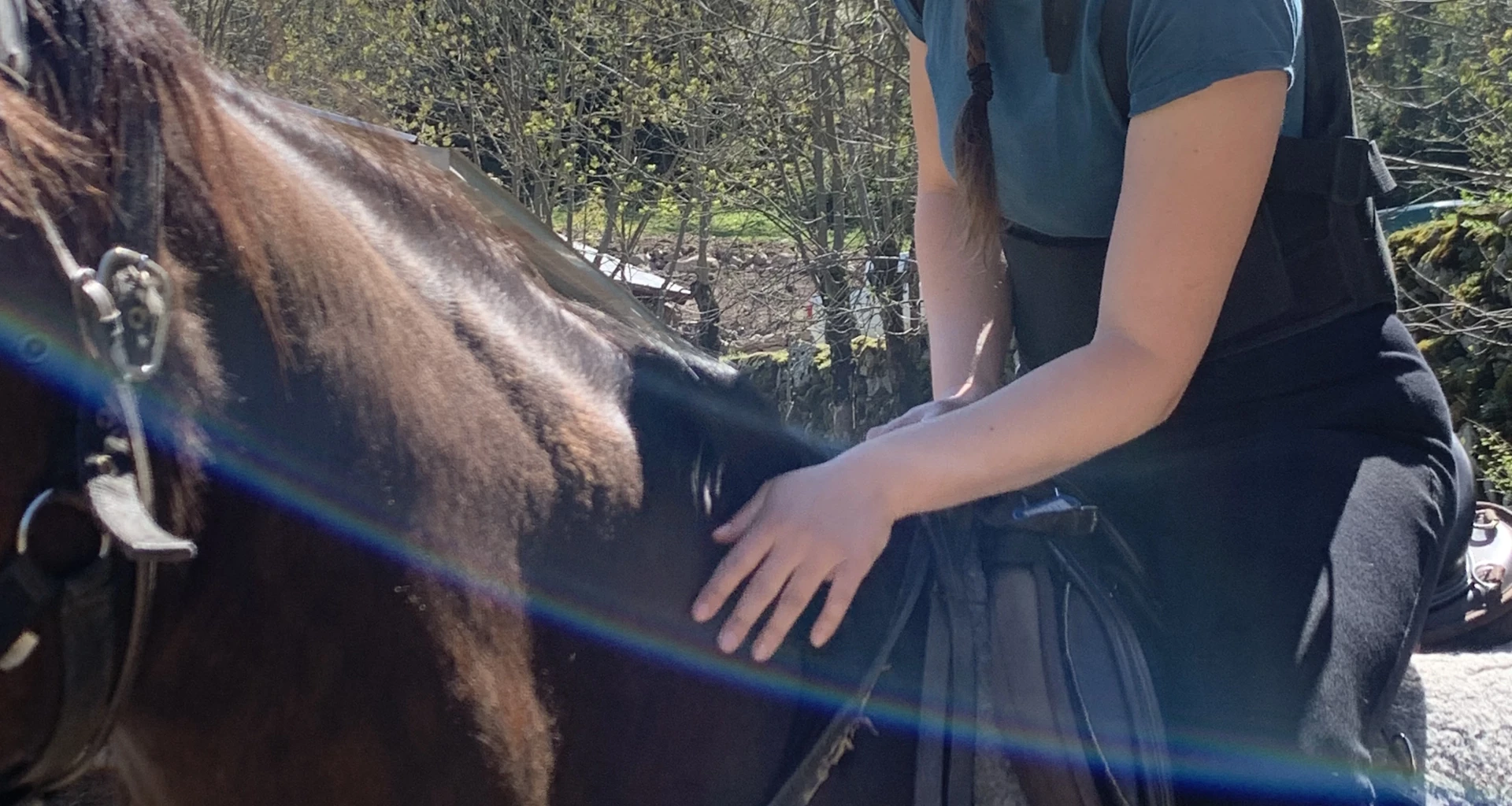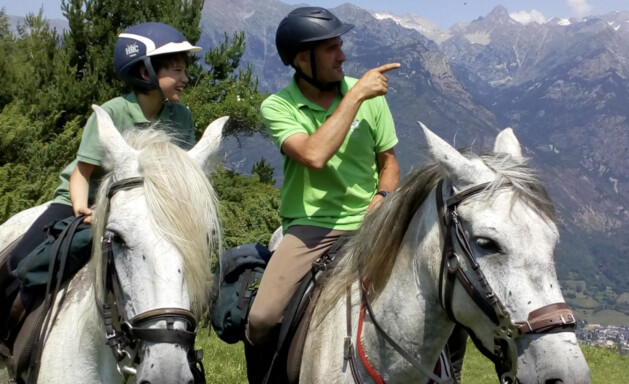Tips for taking care of your horse after a long ride in the high mountains
Traversing mountainous terrain is a challenge for both rider and horse, so proper post-ride care is essential.

For many mountain lovers visiting the Aragonese Pyrenees, horseback riding rides are an ideal way to explore the most important peaks and experience the natural surroundings of the Benasque Valley in a unique way.
Traversing mountainous terrain is a challenge for both rider and horse, so proper post-ride care is essential. Whether you opted for a guided equestrian ride or set off on your own itinerary, after a demanding journey through high mountain terrain, the most important thing is to provide your horse with the necessary care to ensure its well-being and quick recovery.
Hydration and nutrition: the foundation of equine care
During the ride, the horse loses a significant amount of fluids and mineral salts due to physical exertion. It’s crucial to replenish these elements to avoid problems such as colic. After the journey, offer water in small amounts to prevent sudden excessive drinking, and make sure the water is not excessively cold.
Nutrition is key to keeping a horse healthy and in good physical condition. Therefore, it’s important to provide a balanced diet that includes high-quality hay and specific horse feed (if needed). The diet should mainly consist of high-quality forage, such as hay or fresh pasture. Additionally, ensure you adjust the amounts according to the horse’s weight and the effort it has made.
Hygiene and physical inspection
At the end of the ride, carefully check all of the horse’s limbs to ensure there are no rubs, bumps or wounds, especially at the withers and girth area. Also, inspect the horse’s hooves to ensure they are still shod and free from stones or major damage. Check the areas in contact with the bridle to make sure there are no rub marks.
Afterward, it’s advisable to brush the horse to remove sweat, dust and vegetation that may be caught in its coat, mane or tail. This routine not only improves the horse’s comfort but also helps detect potential wounds or skin irritations.
Pay special attention to areas prone to rubbing, such as the back and girth area, as well as the contact zones of the breastplate and crupper. To prevent injuries, ensure the saddle, saddle pad and saddlebags are properly placed and in good condition. Use materials that minimize friction and regularly check the horse’s skin for signs of irritation. If you find any injuries, clean the affected area and apply suitable treatment to prevent infection.
Proper rest and equipment inspection
After a long equestrian ride, the horse needs to rest in a quiet and comfortable place. It’s important to remove the saddle, saddle pad and any other gear to allow it to relax without discomfort.
When you finish the ride, inspect the riding equipment to ensure there is no damage that could cause discomfort or injuries on future outings. Check that the girths, stirrups and other components are in good condition and clean. Poorly maintained equipment not only affects the horse’s comfort but can also compromise the rider’s safety.
Post-ride monitoring
In the days following the ride, observe the horse’s behavior for signs such as apathy, lameness or loss of appetite. These may indicate health problems that require veterinary attention. Remember to provide salt. Proper care not only prevents injuries and illnesses, but also strengthens the bond between rider and horse.
It’s not advisable to go from intense physical activity to a sudden stop. Of course, the horse needs to rest, but if it’s in a meadow or paddock where it can move around, it won’t do it any harm. Low-intensity exercise, short walking sessions, isn’t out of the question.
Remember, a well-cared-for horse is a reliable and willing companion for future mountain adventures. And if you want to organize equestrian rides independently, remember that at Anima Equi we offer an Introduction to Equestrian Tourism Course where you’ll learn how to plan long horseback rides on your own. If you prefer to have a guide, don’t miss our offer of equestrian rides through the Aragonese Pyrenees.

